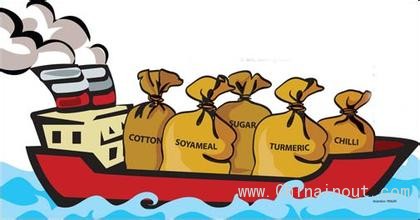
过去几个月间,原油、天然气、黄金、玉米等多种关键性大宗商品的价格连连跳水式下跌,是继2008年大宗商品崩盘之后最大跌幅。然而,令人沮丧的是,这种情况在2015年恐怕也难以好转。
原油持续低迷
业内人士一致认为2015年原油市场难有起色。卓创资讯原油行业分析师朱春凯对国际商报记者表示,至明年一季度原油市场仍难彻底摆脱低迷局面。
朱春凯表示“供应过剩仍将是原油市场最大的利空因素。在没有突发地缘危机的干扰下,预计未来三个月油价走势将整体处在60~80美元。”不仅石油输出国信誓旦旦维稳供应量,美国页岩资源也在冲击市场。
尽管美国页岩气开发声势浩大,但短期内仍很难替代石油。未来全球经济恢复增长,需求也会跟上来,毕竟作为不可再生资源,同时也是塑料、能源等广泛需求的来源,石油价格掉头上来也是迟早的事。
整体不被看好
事实上,不仅原油价格持续低迷,2015年大宗商品价格走势整体也不被看好。
世界银行发布的最新一期《大宗商品市场展望》指出,由于铜、铁矿石价格大幅下跌,金属价格预计将在2014年下降5.5%,与2013年类似。此外,由于美国产能扩大,化肥价格预计将在2014年下跌近12%。
《展望》指出,国际食品价格自2012年达到最高点后持续走低,并预计将持续至2015年。其中玉米价格预计将下滑27%,从2013年的260美元/吨降至2014年的190美元/吨,同时大米和小麦价格也将分别下降16%和9%。
但该《展望》同样指出,大米、咖啡和可可或将与大多数大宗商品价格走势相反。由于一些亚洲供应商的收成恶化,大米价格预计将会上涨;今年早些时候,咖啡价格飙升,导致饮料指数较去年上升23%,未来这种情况很可能还将持续;此外,由于科特迪瓦的供应问题,以及埃博拉疫情可能蔓延至西非的可可生产国,可可价格预计也将会大幅上涨。(中国进出口网)
Over the past few months, the price of crude oil, natural gas, gold, corn and other key commodities fell again and again, the largest decline following the 2008 commodity crash. However, frustratingly, it’s also difficult to improve in 2015.
Crude oil remains in the doldrums
Insiders agreed that the 2015 oil market would be stuck in a rut. Zhu Chunkai, a crude oil industry analyst, told a reporter from International Business Daily, until the first quarter of next year oil market would be still stuck in a rut.
Zhu Chunkai said that supply surplus would still be the biggest negative factor in the crude oil market. In the next three months, the oil price would be $60-80 without unexpected interference geopolitical crisis." Not only OPEC insisted to supply oil steadily, the US shale resources were also hitting the market.
Despite the massive US shale gas development, it was still difficult to replac oil in the short term. With the recovery and development of the global economy, demand would also increase. After all, as a non-renewable resource, and the source of a wide range of plastics and energy, oil is very important and its price would turn up sooner or later. "
Overall not optimistic
In fact, not only crude oil prices would continue to slump in 2015, but the overall commodity price trend was not to be optimistic.
The World Bank released the latest issue of "commodity market outlook," which pointed out that as copper and iron ore price fell sharply, metal price was expected to decrease by 5.5 percent in 2014, similar to 2013. In addition, because the United States expanded production capacity, fertilizer price was expected to fall by nearly 12 percent in 2014.
It pointed out that international food prices continued to decline and were expected to continue until 2015 since they reached its highest point in 2012. Among them Maize prices were expected to decline by 27% from 2013 $260 / ton to 2014 $190 / ton, while the price of rice and wheat also fell by 16% and 9%, respectively.
But it also pointed out, the price trend of rice, coffee and cocoa may be in opposite to most commodity price trend. Since some Asian suppliers harvest was deteriorated, rice prices were expected to rise; earlier this year, coffee prices soared, leading beverage index rising by 23% over last year, in the future, this situation was likely to continue; in addition, due to the supply of Côte d'Ivoire supply issues and cocoa-producing west Africa countries possibly affected by Ebola epidemic, cocoa prices were also expected to rise sharply.











